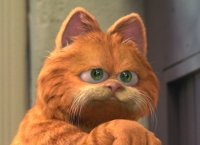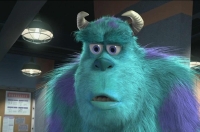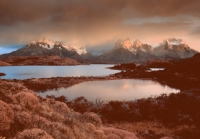Computer Graphics
Exercise 1
Halftoning and
Color Transfer
Submission due: Part 1 (haftoning):
Part 2 (color transfer): 01/12/2005
NOTE:
The submission deadline for the Color Transfer exercise has been postponed till Thursday, December 1st.
IMPORTANT:
For those of you who had problems compiling the NewMat10 library in VC7:
Here is the project that compiles the library: newmat10.zip
You can either specify in the linker input of your project that you link with NewMat10.lib, or you can add the above project to your solution, and specify in Project->Project Dependencies that your main project depends on the output of the NewMat10 project. In any case, you need to make sure that you add the path to the *.h files of the library to your "include" path.
The exercise consists of two parts:
- Implementation of halftoning algorithms
- Implementation of a color transfer algorithm
See also the presentation given in class: ex1.ppt
1 Halftoning
Write a program that reads a grayscale image and outputs a black-and-white image generated by the two haftoning algorithms learned in class. Name your program halftoning. The usage should be the following:
- for the dithering algorithm: halftoning -d <image_file>
- for the error diffusion algorithm: halftoning -e <image_file>
Your program should be able to
read at least one of the following common formats: bmp, jpeg, png, pgm. If the
program file is run without parameters, please print the usage explanation and
which formats your program handles. The output file can also be in any of those
formats. Please name the output files as follows: for dithering use
prefix dither_
and then the original filename; for error diffusion use errdiff_ prefix.
For example, if the input file is shrek.jpg then the output should be dither_shrek.jpg
for the -d
option and errdiff_shrek.jpg for the -e option.
Test your program on a purely black image and a purely white image. These
trivial cases must give you the expected result (unchanged images). Include at
least three non-trivial examples. Nice and original images are preferred (see General Guidelines below).
2
Color transfer
Write a program that performs
color transfer as explained in class. The program should be named ColorTransfer and
its usage should be as follows:
ColorTransfer <image_file_1> <image_file_2>
Again, your program should be able to read at least one of the common image
formats. If run without parameters, the program should print a
"usage" message and which image formats it can recognize. Your
program should transfer the colors of image_file_2 onto the image read from image_file_1.
The result should be written to a file with the refix res_. For example, if the command line was
ColorTransfer
garfield.bmp blue_monster.bmp
then the output will be a file named res_garfield.bmp, with the image of blue
Short reminder of the algorithm
Perform Principal Components Analysis (PCA) on the colors of both
images, in RGB space. Compute the oriented bounding boxes for the colors of
image_1 and image_2, where the bounding boxes are aligned with the axes found
by PCA. Compute the affine mapping (a function) that transforms box_1 to box_2.
Now, go over all the pixels of image_1, apply the mapping to their colors and
record the new colors in the output image. Be sure to restrict the new color
values between 0 and 255 for each color channel (assuming you're using an 8-bit
per channel image format, which is the standard case).
In the documentation (see below) please discuss the quality of the algorithm by
answering the following questions: when do you think it should perform well,
when not, and why? Include examples (good and bad) that back up your
conclusions. Try to suggest a solution to the problems you see with the current
algorithm (a bonus of 3 points will be given for good theoretical suggestions,
a bonus of 20 points - for practical implementation).
Examples of color transfer
Click on the small images to get the larger images.
|
Image_1 |
Image_2 |
Result (colors of Image_2 on Image_1) |
Libraries and useful links
You are welcome to use any open-source image library and linear algebra library. You are not allowed to use the provided advanced functionalities, such as dithering algorithms, because the idea is that you implement them yourself. We recommend the following libraries:
- FreeImage
For reading, writing and manipulating images of various formats.
Download the binaries and the manual. The first few pages are all you need to get started. Here's a simple example program that uses this library:
FreeImageExample.cpp
- NewMat10
(download page, documentation)
For vectors and matrices, computing eigendecomposition and much more.
This library is written in C++. Even if you don't know C++, it is very simple to use (and also a good opportunity to start learning something about C++). Note that this library uses 1-based indices, meaning that they start counting from 1 and not from 0. Here is a simple example program to get you started:
NewMatExample.cpp
- IrfanView
A good viewer, editor and converter for images of various formats. Please note that it does not handle alpha-channels (something you don't need in this exercise but might need in the future.
General
guidelines
What to submit
- The code, in electronic form, as described below.
- At least 3 working examples, for each part of the project. Submit them together with the code. Note: a bonus of 5 points will be given for especially nice examples. Visual quality is important in graphics!
- Hardcopy of the documentation (do not print the code). Explain what you have implemented, describe in short the main parts of your programs and the modules, if any. Also, please mention any nuances of usage, such as the file formats accepted by your program. In addition, include the answers to the questions posed in Part 2 (Color Transfer).
Electronic submission guidelines
You may implement the exercise in C or C++. If you work under Linux,
please put the code and the examples under your home directory, give read
permissions and write the exact location in the documentation hardcopy. If your
code consists of several files, be sure to include a makefile. If you work
under Windows, you may submit a diskette/CD with the project (Visual C++ 6.0 or
.NET) and the examples (or alternatively place the files under your home
directory, as described above). Make sure that the submitted media contains
your name, ID and e-mail, in a file (and not only on a sticker on the diskette,
because they tend to fall!). Also make sure that you include the workspace and
project file (*.dsp,
*.dsw, *.vcproj, *.sln).
For further questions contact Andrei
Sharf (asharf@tau.ac.il)
Good luck!





